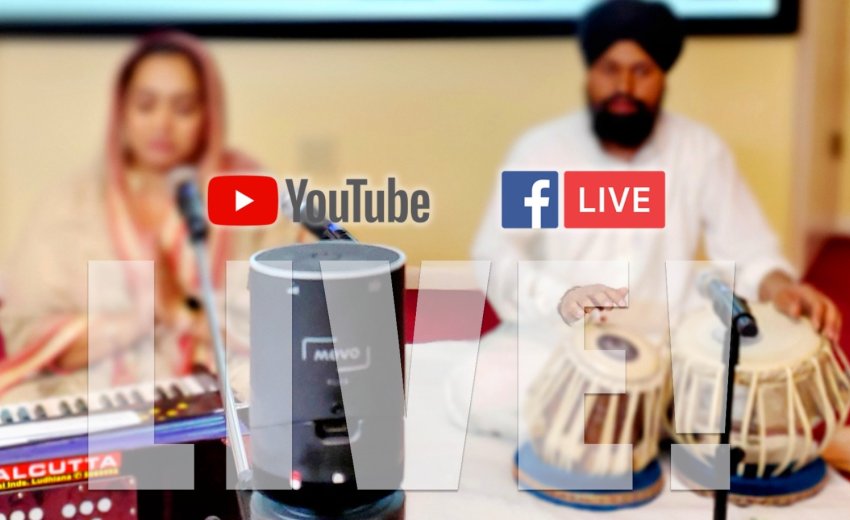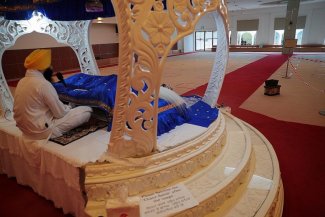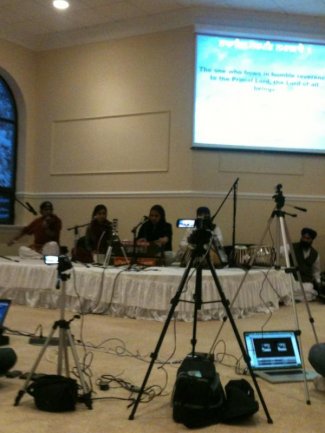Covid-19 restrictions have resulted in a huge drop in Sangat attendance at gurdwara and consequential loss of donations (ਚੜ੍ਹਾਵਾ). This trend may not be reversible and there is need to assess the impact on costs associated with gurdwaras and religious personnel.
Live-streaming of religious programmes, Kirtan and discourses, through Webinars and WhatsApp in addition to daily TV religious programmes, is becoming popular.
These services make physical attendance at Gurdwaras optional, mostly for rites of passage i.e. ceremonies that mark important events in a person's life, and major festivals, subject to Covid-19 restrictions of course. Admittedly, virtual Sangat is not the same as the spiritual experience of physically participating in worship, Kirtan and katha, in gurdwara Sangat environment.
Regarding Covid-19 related Sangat trend away from Gurdwaras, Satwant Singh Calais, a leading Sikh community and youth camps activist in Australia, mentioned Webinars by those like Sikh Research Institute.(SikhRI), Dya Singh of Australia and Veer Manpreet Singh reaching over 100,000 people on many occasions. He writes, “Gurdwaras may no longer be the focal point for religious experiences and Sikhi education for next generation Sikhs. Covid has now given people time to reassess their reason to go to the Gurdwaras.”
There is almost a revolution going on in the religious sector which requires an assessment of longer-term impact at local and national and global levels.
There are small Sangats in remote diaspora places where Gurdwaras are run entirely by the Sangat. At the opposite end we have Takhats, historical and large city gurdwaras which need large sums to defray costs of religious staff and buildings. In some towns we have more Gurdwaras than we need due to community and ideological divides. Many in the name of castes and braadris are even against Gurmat. Local Gurdwaras can pool resources, reduce staff costs and use spare buildings for educational, youth and community activities.
The discipline of a new regime is being imposed by COVID-19 on the whole of the religious sector. Thousands depend for their livelihood on religious activities. There is a vast range of religious personnel from regular granthis who perform gurdwara services, local and travelling raagis (traditional Gurbani singers) and kathakaars (exegetes) to sants and those who wear religious garbs and have become dependent on donations. The Sikhi lesson of kirat karni (earning ones living) is being taught by the pandemic leading to a leaner religious sector. Gurdwaras are looking at ways to review and rationalise their running costs.
Thousands of religious personnel including travelling raagis and parcharaks are struggling to make ends meet. There are likely to be hundreds of jathas who have families in India and who are unable to move around. They are in gurdwaras without much income from Sangat donations as Kirtan bhet. Innovative gurdwaras have already started live-streaming kirtan and katha but that does not help the kirtan-bhet situation.
The suggestion is that gurdwara committees should actively engage in fundraising for gurdwara upkeep and paying the granthis and jathas. The live streaming is a channel to request the faithful for their daswandh. Some gurdwaras have income from rented properties including shops and sale of books and religious artefacts.
To quote Satwant Singh Calais of Australia:
"We have seen that COVID- 19 has denied many Raagi Jathas and Kathakaars to be able to earn funds and repay their cost of getting out to countries like Australia, UK and America. Sidney Sangat have raised funds for jathas to enable them to support their families. Most travel abroad without any employment agreement and depend on Sangat donations (Kirtan bheta). They get accommodation in cramped quarters [in view of COVID social distancing] and eat in the gurdwara langar. There is need for standard award structures for jathas.”
From his own experience in recent years, Dya Singh of Australia writes, “The next generation Sangats are moving on to I-Phones. Bilingual Gurbani Kirtan, katha and discussions are all on WhatsApp groups, email groups, webinar, zoom meetings and so on. Even live gurdwara programs are being on-lined. Sunday programs are on air. It is amazing how much Sikhi interaction is going on worldwide.”
The pandemic has also highlighted the mental health issues of senior citizens. Gurdwaras can do much through volunteer sewadars from relevant professions and some are doing just that.
In the context of these discussions, the last word is about those who choose to train as religious personnel, mainly granthis, kirtanias and kathakars (those who serve in gurdwaras, recite, sing and interpret Gurbani). They should have genuine spiritual commitment and aptitude, a deep sense of calling, to serve the Sangat in these missionary roles. It is preferrable that members of the Sangat should themselves do Sahaj or Akhand Paatth (slow or continuous reading of Sri Guru Granth Sahib).
Gurdwara managements should also develop standard job descriptions and responsibilities of religious personnel. They should be conversant with modern communications technology for disseminating gurdwaras services to remote Sangats. Accordingly, they should be paid well so that they do not have to worry about their families or work security.
Covid-19 pandemic is a major challenge for the religious sector but also offers opportunities for overdue reforms.
Gurmukh Singh OBE
E-mail: [email protected]











